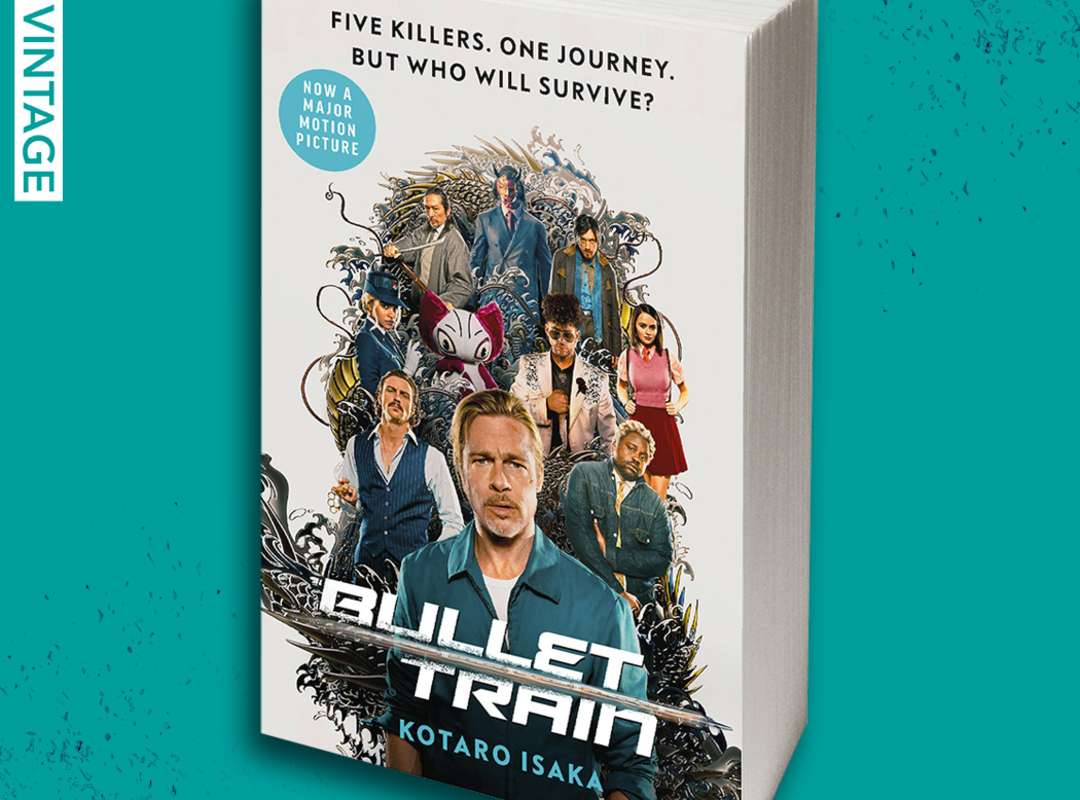 Brad Pitt stars in the adaptation of Kotaro Isaka's best-selling Japanese novel 'Bullet Train'
Brad Pitt stars in the adaptation of Kotaro Isaka's best-selling Japanese novel 'Bullet Train'
By now you're probably aware of 2022's big summer blockbuster zipping onto cinema screens all over the UK. That's right, we're talking 'Bullet Train' starring Brad Pitt, Aaron Taylor Johnson, Bryan Tyree Henry and a slew of other jaw-droppingly amazing celebrity cameos. The fast-paced action of the film obviously isn't all real but we thought we'd help you wow your friends with film trivia on the facts vs. fiction, the book the film was based on and the tidbits of Japanese culture scattered throughout the Bullet Train's 2 hour runtime!
1. How similar is the film's bullet train to the real life version?
While the high-octane action scenes of the film may seem too ludicrous to exist anywhere outside of the silver screen, the film was actually adapted from the best-selling novel by Japanese author Kotaro Isaka and has magically created the look and feel of the real shinkansen. The book, however, takes place on the fastest of the bullet train line routes, the Hayabusa, going north from Tokyo to Morioka, not the Tokyo to Kyoto route in the film. As well as having taken a bit of creative license with the background of its protagonists, the film playfully adapts some other parts of the source material. The Japanese word for bullet train is actually 新幹線 ‘shinkansen’ (lit. ‘new main line’) but the Japanese characters used in the film are 弾丸列車 or ‘dangan ressha’ which literally translates as ‘bullet (dangan)’ and ‘train (ressha)’ as a nod to the pulse-pounding fight scenes in the film. Similarly, throughout the film, you'll probably have spotted the NSL or 'Nippon Speedline' logos complete with their own kanji characters (日本高速電鉄). In reality, however, it's the Japan Railways Group, or JR, that we have to thank for running this hyper-efficient service and providing the super useful regional and national Japan Rail Passes to international visitors.
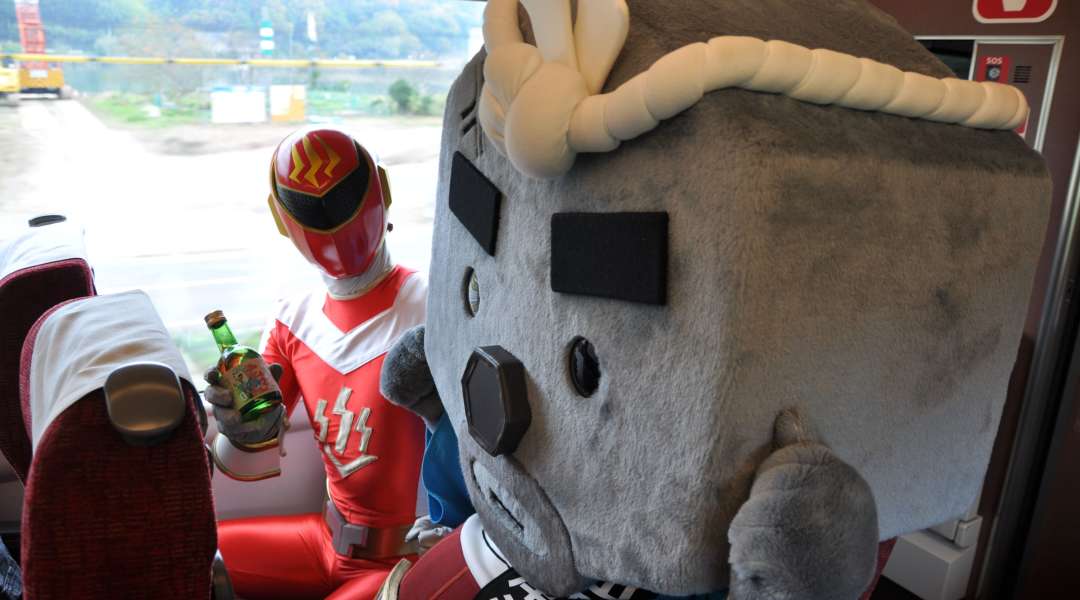 Toyooka city's 'yuru-kyara' rock mascot, Gen-san, cosies up for some sake with a Power Ranger aboard a local trainline
Toyooka city's 'yuru-kyara' rock mascot, Gen-san, cosies up for some sake with a Power Ranger aboard a local trainline
2. Do giant colourful Japanese mascots really exist in real life?
You bet they do! Momonga, the cute and cuddly mascot we see throughout the film and plastered all over the train carriages, may have been made up but is actually scarily true to life. Every prefecture, every town, and every company will have a cute 'yuru-kyara' mascot that usually incorporates some element of what the place is famous for. For example, Gen-san (pictured above) is the mascot of Toyooka city, nextdoor to the glorious Kinosaki Onsen, whose body is made of basalt rock from the surrounding caves and whose mission it is to protect the beautiful natural world. Although neither Momonga nor Gen-san ever made it that far, there even used to be an annual Yuru-Kyara Grand Prix where the public would vote on the cutest mascot, but unfortunately it had to come to an end in 2020 after many felt it had become too competitive! No worries, though - you'll still find mascots like Hokkaido's 'Meron kuma' melon bear (a black bear with a melon for a head) out in the wild, or indeed taking over bullet train carriages for limited edition runs. Some prefectures also have Pokémon mascots like Geodude for Iwate (‘Iwate’ means rock hands in Japanese), Sandshrew for Tottori, because of its sand dunes, and Chansey for Fukushima, bringing happiness and plenty, just like the meaning of the kanji character for 'fuku' in 'Fukushima'.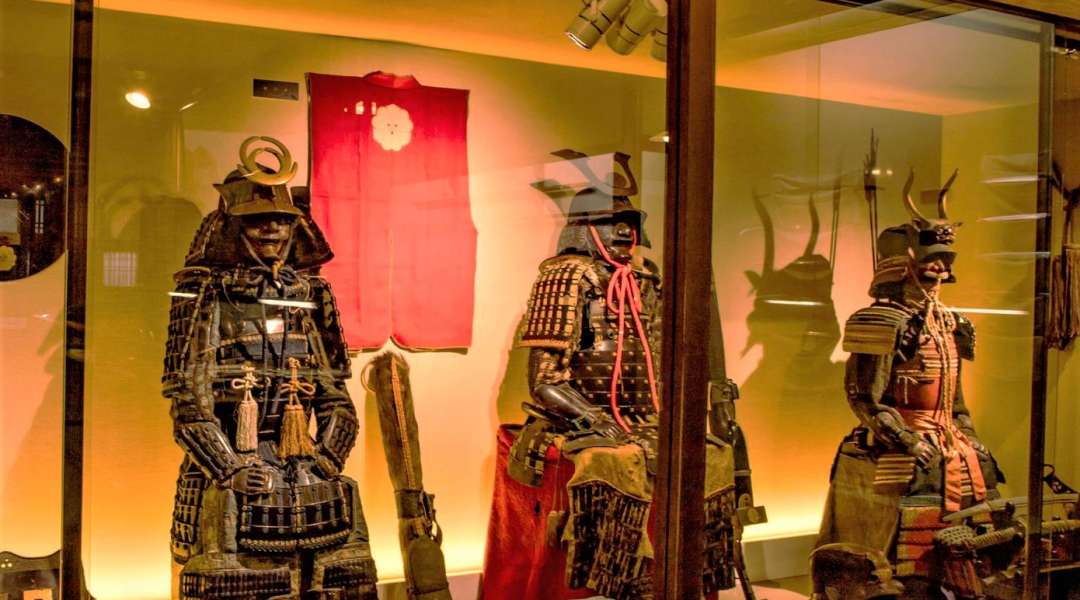 A line-up of preserved feudal 'kacchu' samurai armour, complete with 'men-yoroi' masks and weaponry
A line-up of preserved feudal 'kacchu' samurai armour, complete with 'men-yoroi' masks and weaponry
3. What do you call the masks and swords in the movie?
The film's mysterious antagonist, The White Devil, and his crew of katana-wielding warriors cut a mean silhouette in their traditional 'salaryman' suits, but the masks and swords they use have an even more authentic and traditional significance. The sword is called 'uchigatana’, meaning 'cutting blade' and the mask is called 'men-yoroi’, meaning 'face armour'. Both date back to Japan's feudal past and the warrior classes of the time - what we might now think of as 'samurai'. More than just protection, the masks would be carved into the grizzly likeness of demons and wild animals to inspire fear, with untamed artificial facial hair as a sign of defiance against the social norm of remaining clean shaven. As for the 'uchigatana', this was a sword smaller than the traditional two-handed 'tachi', allowing for ease of movement as well as use in a single hand, and is close to what we might call a 'katana' in English (In Japanese, 'katana' an umbrella term used to refer to any type of single-edged sword).
To experience some of these heritage items yourself, you can head to the Nisshinkan Samurai School in Aizu-Wakamatsu and try your hand at kendo sword fighting in a suit of armour, or you can see the craftsmanship that goes into the sword making process in Seki, the City of Blades, in Gifu prefecture, at the workshops of 26th generation sword makers.
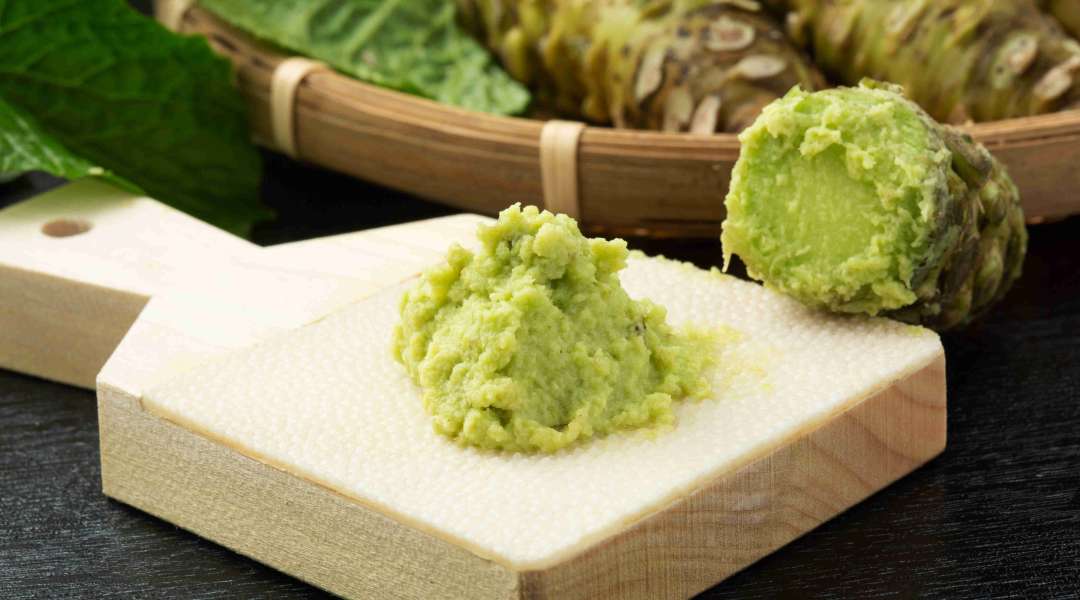 A fresh wasabi root ground into wasabi paste using a special serrated board ©TSJ
A fresh wasabi root ground into wasabi paste using a special serrated board ©TSJ
4. Do people actually eat wasabi peas in Japan?
Yes, they do! Amongst the many experiences had by Brad Pitt’s happy-go-lucky character Ladybug, one of the most random but joyous is his obsession with wasabi peas! These popular Japanese snacks are not hard to come by at all, whether you're in a convenience store or at a Japanese ‘izakaya’ pub. However, they are more commonly made with dried edamame beans as opposed to peas, as their name in English suggests. The crunchy edamame beans are coated in Japan’s signature horseradish, the go-to flavour known as wasabi, used to add spice or heat to a meal like sushi, sashimi and a variety of other dishes. Popular as it may be, it requires very specific conditions to grow and the area most famous for its delicious fresh wasabi is on the Izu Peninsula, south of Mt Fuji, in Shizuoka Prefecture. Here, you'll find the rolling wasabi fields surrounding the temple town of Shuzenji, so don't be surprised if you're presented with a wasabi root and a small serated board for hand-grating while sat for dinner at your 'ryokan' traditional inn.
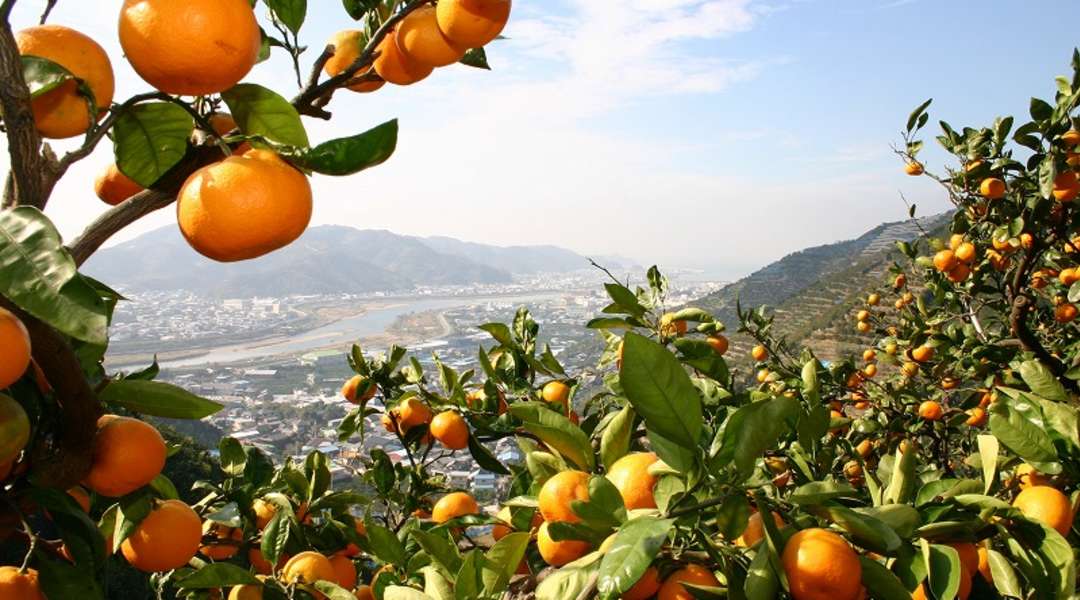 The 'mikan' tangerine orchards of wild and rustic Wakayama prefecture
The 'mikan' tangerine orchards of wild and rustic Wakayama prefecture
5. Are tangerine oranges really grown in Japan?
Essentially, yes, they are! Near the end of the film, the assassin known as ‘Lemon’ finds himself swamped by citrus fruits, in what may seem like a far-fetched occurence for a country like Japan. However, more than just a visual pun on the name of his partner 'Tangerine', the Japanese ‘mikan’ orange is actually a very special variety of orange, well-loved in Japan for being extremely easy to peel, incredibly juicy and free of seeds. They are generally grown in the parts of Japan with more Mediterranean climates like Wakayama prefecture, around the Kumano Kodo heritage pilgrimage trail, and Ehime prefecture, where you’ll likely find yourself being handed a juicy ‘mikan’ orange by a stranger on a ride along the Shimanami Kaido cycling bridges. If you want to get the real experience, though, make sure to swing by in winter when they are at their sweetest and their ripest. In Japan, fruit has traditionally always been seen as a dessert food, making the juicy mikan a favourite treat for the O-Shogatsu new year celebrations when skies are clear and crisp, and Mt Fuji is at its most spectacular.
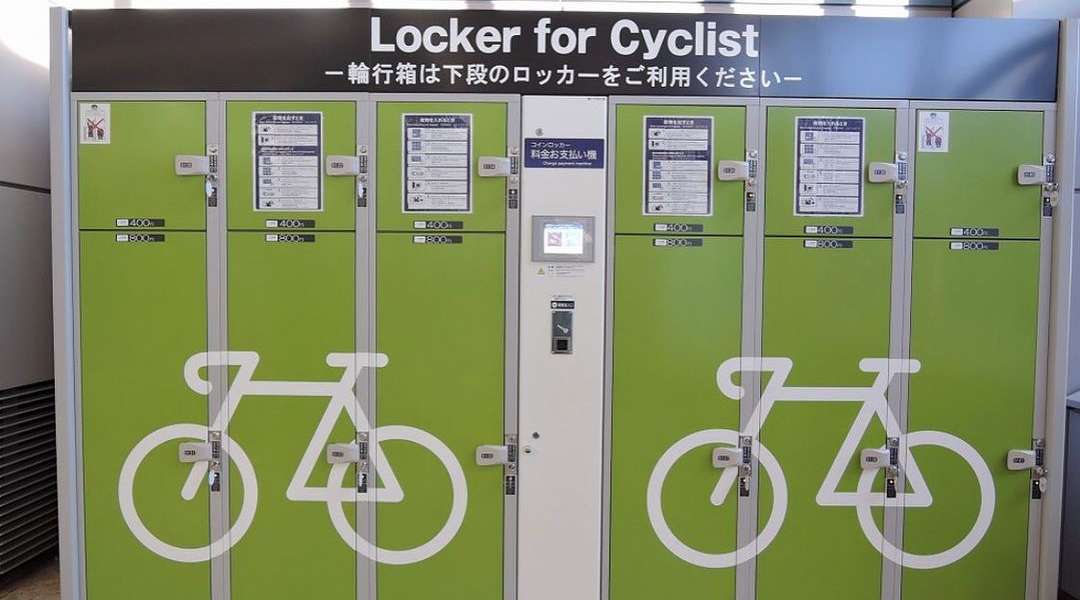 A row of Japanese coin lockers in different sizes ©@coinlocker.j_p on Insta
A row of Japanese coin lockers in different sizes ©@coinlocker.j_p on Insta
6. Are coin lockers actually that easy to find in Japan?
While they might not be on train platforms, they are everywhere. Whether outside train stations, in front of bars and clubs, or in the middle of nowhere, they’re truly just as ubiquitous as the Japanese vending machine and useful for more than just stowing your assassin paraphernalia like Brad Pitt. Petty crime is very rare in Japan, and you’re very unlikely to have to worry about things like stolen property, so leaving your luggage unattended in a locked container doesn’t carry the same stress it might back home. In fact, having a coin locker available to you can be a total life saver, especially for adventurous travellers who want to tour as much of the country by train, without having to haul around heavy luggage at every stop. These ambassadors of Japan's convenience culture generally come very cheap from as low as 300yen (£2) to roughly 600yen (£4) per day depending on size, and can accommodate everything from handbags to suitcases. Do read the small print, though! Some lockers are only for shorter stay, while some facilities offer an average maximum storage time of around 3 days and can go up to 8 days at places like Narita Airport.
Enjoyed getting the inside track on this Japan-based blockbuster? Why not check out our rundown of vintage Japan filming locations, the regions that inspired the Ghibli movies and what *not* to do when visiting Japan, with Kurupt FM from People Just Do Nothing: Big in Japan.
Still craving some cinematic inspiration? Have a read through our roadtrip through Japan, based on 2022's Oscar-winning film, Drive My Car.

















































